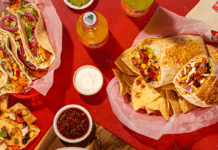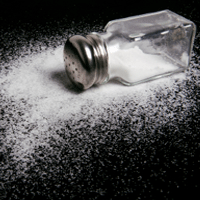“I’ll have the Angus Bacon & Cheese burger with 780 calories and 1,990 milligrams of sodium, please. Hold the fries.” Sound odd? Well, nutrition information tucked behind counters in fine print could one day be a thing of past, as health advocates push for mandatory calorie and sodium counts to be displayed on restaurant menus and menu boards.
In April, Toronto’s Board of Health called for mandatory menu labelling at chains with more than 10 restaurants or at least $10 million in annual sales. The Board said if the province has not passed a law requiring menu labels by Sept. 1, the city should implement its own bylaw.
In Ontario, NDP MPP France Gélinas tabled a bill called “Healthy Decisions for Healthy Eating” for the third time. The bill, re-introduced in April, would require chain restaurants with five or more locations in Ontario, and sales of at least $5 million a year, to post calorie counts next to each menu item. Items containing high sodium levels would also be flagged.
And, while Mississauga, Ont.-based Extreme Pita is one chain that posts calorie counts on its menus, many restaurants only provide nutritional information on brochures and websites. “It seems painfully obvious that the way restaurants are providing nutrition information is not effective, and if governments care about the health of their constituents, then they’ve got to figure out a way to do that better,” says Bill Jeffery, national coordinator, Centre for Science in the Public Interest, an Ottawa-based health-advocacy organization.
The Canadian Restaurant and Foodservices Association (CRFA) opposes mandatory labelling on menus. “It would be very challenging to provide calories on menus and menu boards because of the customization in a restaurant operation,” says Joyce Reynolds, EVP, Government Affairs at the CRFA.
So, the CRFA is working on a national, voluntary framework based on B.C.’s Informed Dining program, introduced by the B.C. government last year. Participating restaurants supply nutritional information in an appendix to the menu or a brochure. “We feel we’ve got a solution that meets the information needs of customers,” says Reynolds.
To date, 26 restaurant chains have joined B.C.’s Informed Dining program, including new additions such as Boston Pizza, McDonald’s, Pizza Hut and Tim Hortons, which will roll out the program by the end of the year.
Surrey, B.C.-based De Dutch Pannekoek House Restaurants was one of the program’s original participants. The Informed Dining logo now appears on every menu page, and the nutritional information is supplied in a separate pamphlet. “Most people have come to expect that restaurant food is a little heavier than what you would make at home,” says Pamela Waring, marketing manager at De Dutch. “[But] they like the idea that if they ask for it, they can get it.”
Displaying calorie and sodium counts could have an unintended benefit: product reformulation. “Restaurants that provide nutrition information want that information to look good,” says Katie Jessop, national business development manager for the Heart & Stroke Foundation’s Health Check program. And operators may push their suppliers to reduce sodium in certain ingredients. “Even though it will be small increments over time, it will make a significant difference in the long term,” she says.
While no one knows how the menu-label debate is going to play out, the issue is not going away. “We’ve got great natural experiments in other jurisdictions to see the future of how things could pan out in Ontario or [nationwide],” says Leslie Whittington-Carter, Ontario government relations coordinator at Dietitians of Canada. “It would be great to see a consistent approach across the country.”




















